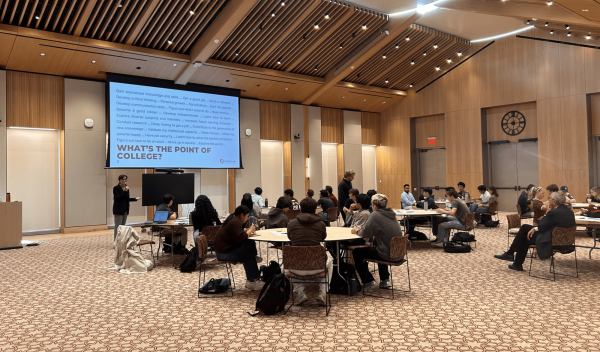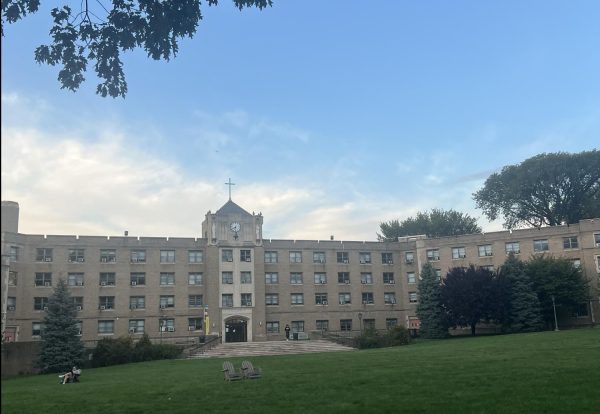Senior Researches Neural Stem Cells in Mice
The human brain is still a mystery in many ways. Elizabeth Wood, FCRH ’20, is up to the challenge of solving it. Her work in the lab run by Tiago Goncalves, Ph.D., at the Albert Einstein College of Medicine focuses primarily on the growth and function of adult born neurons. These brain cells only appear in specific regions of the brain like the hippocampus. Their specific function is to discriminate between memories of different events.
“If you’re here in the library right now and you come back and do the same thing tomorrow, these cells help to distinguish between those two memories,” said Wood.
Wood has worked as an assistant in the lab since the summer after her sophomore year. She said the experience prepared her to take the reins on her own project at the beginning of this school year.
“When I first started in the lab, it took me a few weeks just to understand what everyone in the lab was saying,” she said. “I’m glad I was able to learn a lot about what they do there before starting my project.”
Her project, titled “Elucidating the Role of Chaperone-Mediated Autophagy on Adult Neurogenesis in the Dentate Gyrus of Mice,” builds on other work done in the lab.
For the project she used mice to observe how Chaperone-Mediated Autophagy (CMA), a type of protein degradation, affects the growth of new neurons.
“Previous background research showed that Chaperone-Mediated Autophagy could have an effect on adult born neurons, but nobody had looked directly into it,” Wood said.
Wood worked with two groups of mice. One group was normal, while the other was genetically modified so that CMA could not occur. She injected them with a protein that caused the adult born neurons to appear green. After killing the mice 21 days later she was able to observe the ways the adult neurons developed in each group.
While Wood already wrote about her findings for her senior thesis last semester, the project is still ongoing. She said being able to take the project even further has been a great experience.
“It’s exciting to keep working on it,” she said. “I was so worked up about getting where I needed to complete my thesis. But then I reached a point where I had results that I could look at and then say, ‘OK now what should we determine?’”
So far in her work Wood has determined that mice without CMA had a decrease in neural stem cells. Wood’s next step in her research includes comparing the effects of CMA in older and younger mice.
Adult Neurogenesis plays a key role in a lot of different functions, and Wood says this type of research can have many broader implications.
“For my project specifically, a lot of diseases of memory and neurodegeneration are caused by problems with protein degradation,” said Wood. “Everyone’s memory fades as they get older, and maybe the decline in neurogenesis and Chaperone-Mediated Autophagy has something to do with that.”
Looking beyond her research, Wood has her sights set on attending a neuroscience Ph.D. program next year. She said the project helped prepare for her next steps.
“I think in the future I’d like to steer towards neurodegeneration and diseases that affect memory and what goes wrong in those disease states,” she said.
Wood said she ultimately learned about a lot more than neurons while developing her project.
“I really learned how to piece everything together,” she said. “When you write a paper for a publication people describe it as you’re still telling a story. What does your data say? It was my first time doing that instead of just bench work.”















































































































































































































